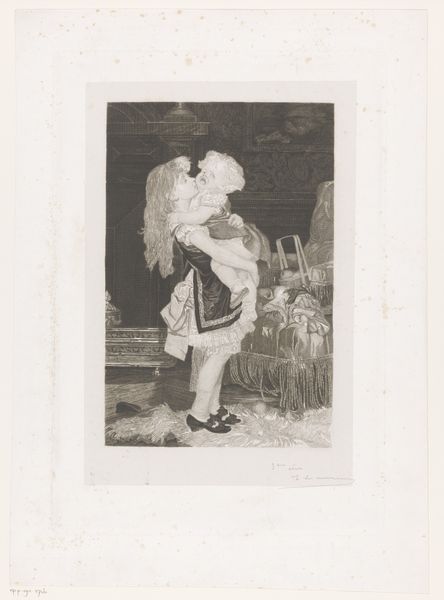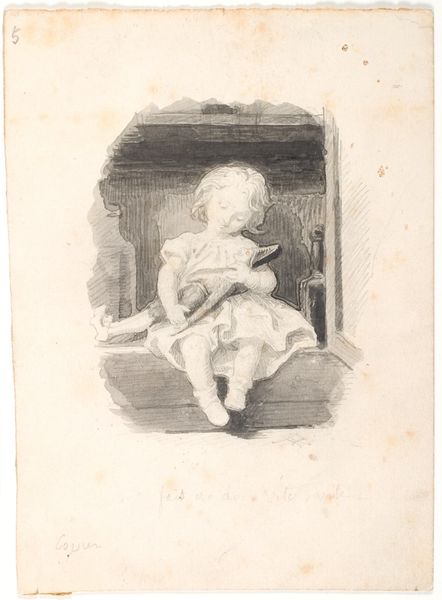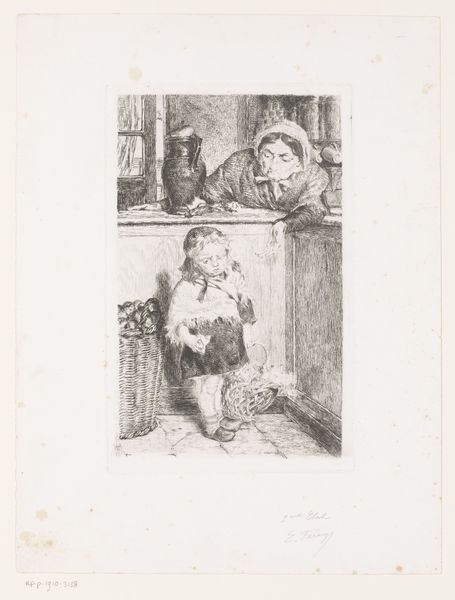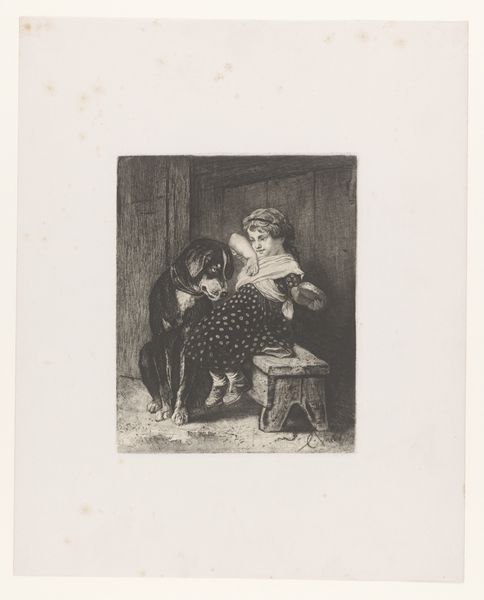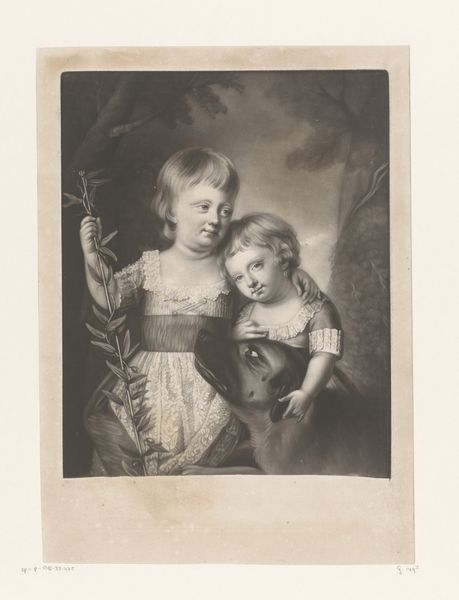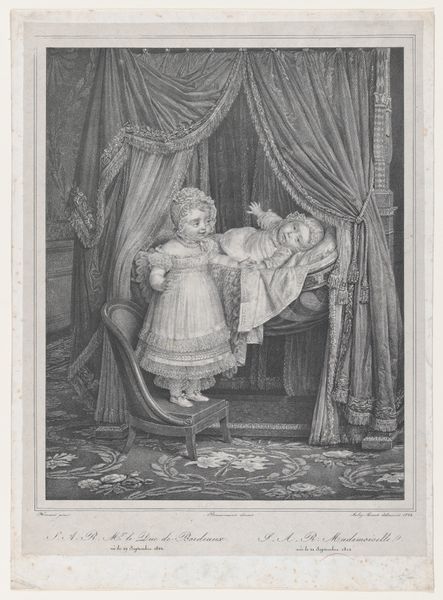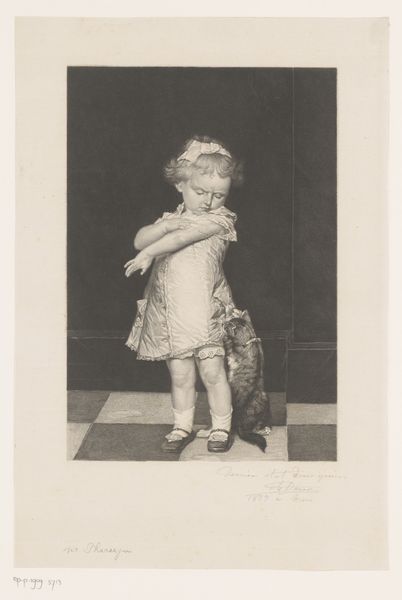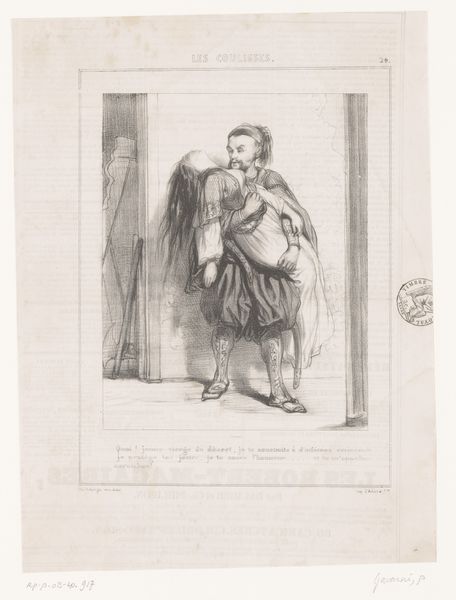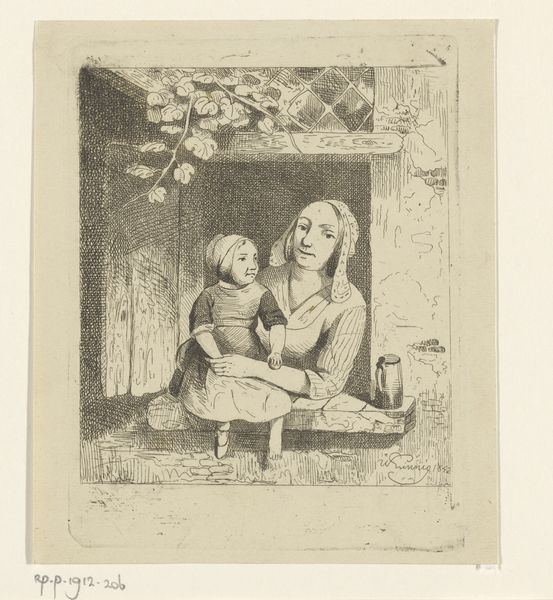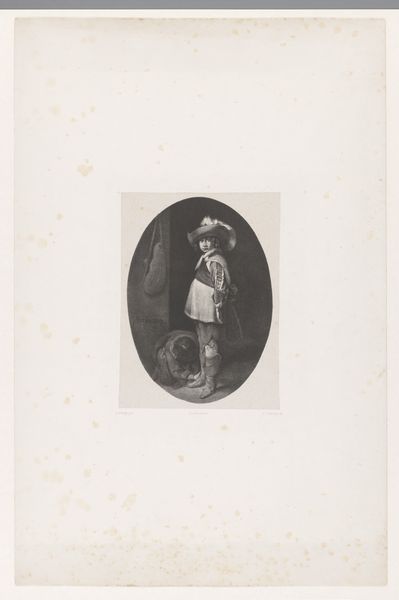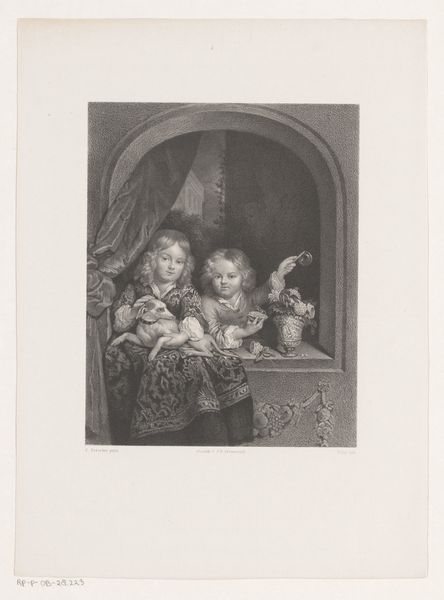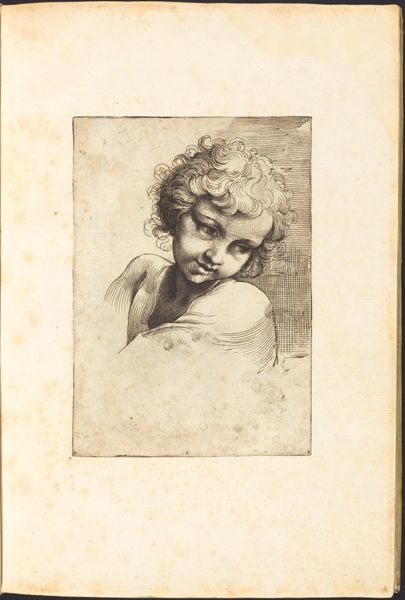
drawing, paper, pencil
#
portrait
#
pencil drawn
#
drawing
#
aged paper
#
light pencil work
#
pencil sketch
#
paper
#
pencil
#
genre-painting
#
academic-art
Dimensions: height 454 mm, width 309 mm
Copyright: Rijks Museum: Open Domain
Curator: This pencil drawing by Frans Lauwers, created in 1882, is titled "Meisje met een huilende peuter in haar armen," or "Girl with a Crying Toddler in her Arms." Editor: Oh, my! Even with the light pencil work, that crying child conveys such intense emotion. You can almost hear the wail. It feels…intimate. Curator: Indeed. Lauwers was working within the academic art tradition, which often looked to portray sentimental, everyday scenes. But, this piece manages to avoid complete sentimentality. What do you make of the setting? Editor: It appears to be a rather cluttered interior, perhaps indicating a more modest upbringing, a domestic scene we can read into through cultural and social markers. The girl, though simply dressed, still suggests a certain social standing with those charming, if slightly worn, shoes. It brings forth an almost Victorian social tension, a push and pull of status. Curator: Exactly. Notice how the girl seems to be simultaneously comforting and restraining the child. There's a dynamic interplay of affection and exasperation present, perhaps hinting at the broader social expectation of women in caretaker roles, where emotions must be carefully managed, even masked. Editor: That’s so fascinating. I think what gets me most is the immediacy of the emotional states depicted, something he renders so well. How relevant this work feels still for so many contemporary viewers reflecting on maternal burden and gender roles! Curator: Lauwers manages to tap into that very universality with this quiet pencil sketch. There's an unvarnished emotionality at play that feels remarkably modern despite its period roots. Editor: I agree. It transcends a mere historical snapshot, engaging viewers across eras, reflecting the timeless tension within familiar, archetypal family roles.
Comments
No comments
Be the first to comment and join the conversation on the ultimate creative platform.
